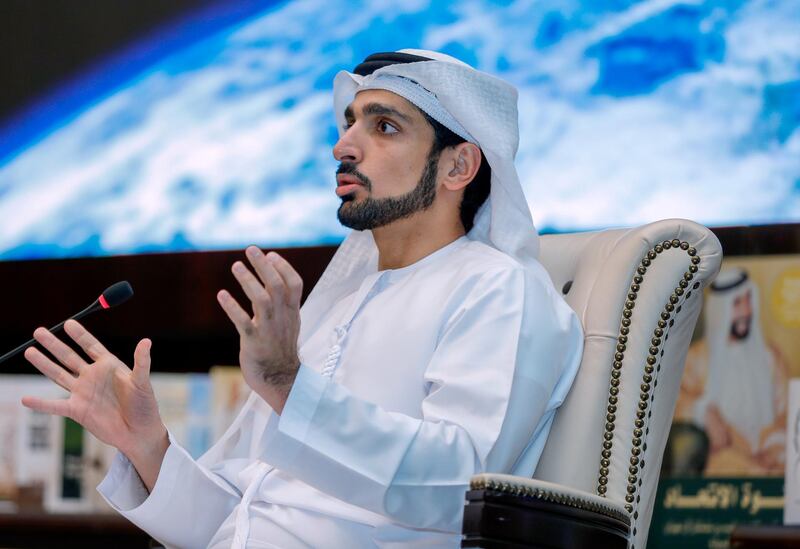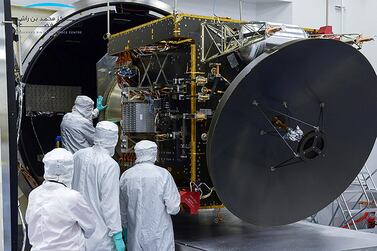The UAE’s Mission to Mars next year has the potential to inspire and energise young people across the Arab world, one of its senior officials has said.
Omran Sharaf, project manager of the Red Planet probe, said the launch would send a powerful message that dreams of space exploration could be achieved.
Speaking on Wednesday, he described how the craft – called Hope – would blast off in July next year and reach the surface of Mars by 2021.
He said he believed the mission had the potential to motivate Arab youth beyond the UAE’s borders, demonstrating the region was forging a more prosperous future.
“It is going very well. We are ready, we have to be," said Mr Sharaf at the Emirates Centre for Strategic Studies and Research think tank in Abu Dhabi.
“The message from the UAE [is] if [we] can reach Mars in less than 50 years, other Arab countries with a great legacy can do even greater things."
Hope, or Amal in Arabic, blasts off for the Red Planet from Japan in the summer of next year.
It is the first mission to Mars by any Arab or Muslim majority country and comes in the same year as the UAE celebrates its 50th birthday.
More than 100 Emirati engineers have been working on the project in partnership with several universities in the United States.
The craft is in its final stages of testing and will be launched in July as Earth and Mars will be at their closest distance for two years. The probe will take seven to nine months to reach the planet.
In a wide-ranging discussion, Mr Sharaf also reflected on the launch of the UAE-built KhalifaSat satellite last year and how the UAE sent its first astronaut, Hazza Al Mansoori, into space last month.
He said some people were sceptical the Emirates could build its own satellite, but that the mission was continuing to prove an enormous success.
“Some people said nothing was manufactured 100 per cent here,” said Mr Sharaf, an experienced Emirati engineer who trained in the US and Korea.
Since its launch, KhalifaSat has captured at least 7,000 images including striking shots of Palm Jumeirah in Dubai, the holy Saudi city of Makkah and the Baikonur Cosmodrome in Kazakhstan, where Maj Al Mansoori travelled to space.
Mr Sharaf went on to stress that space exploration was tough and that taking risks was important.
He also outlined how plans for the Hope probe stretched back to the foundation of the state.
"How will you develop if you don't take risks? Failure is an option, failure to progress is not an option," he said.
“It [the idea of Hope] started in 1971 when the UAE started building stations to provide communications and TV broadcast services. But we used foreign satellites provided by private companies then.
“By the 1990s, the UAE decided to operate its own satellites through the [UAE-based satellite operator] company Thuraya.
“The UAE gained a great deal of experience by making this decision.”
Last year, the former head of Nasa, Charles Bolden, said the Mars mission had the potential to be of huge benefit to humanity.
"How many nations have been successful in reaching Mars? Not very many," Mr Bolden told The National.
“It is a huge deal for us to have the Emirates Mars Mission reach Mars."








